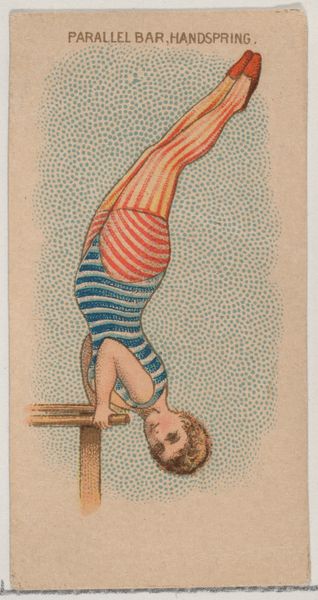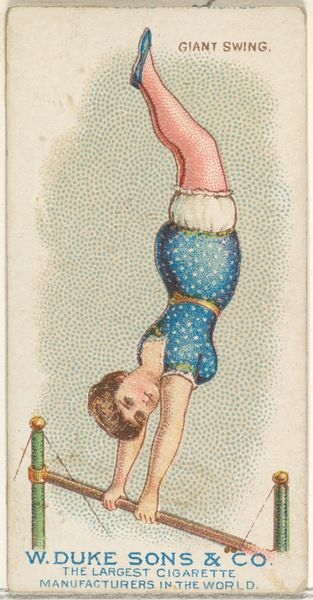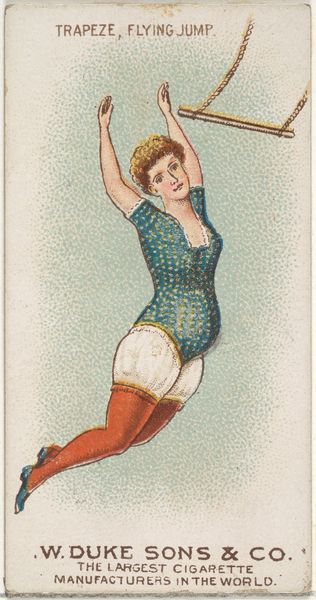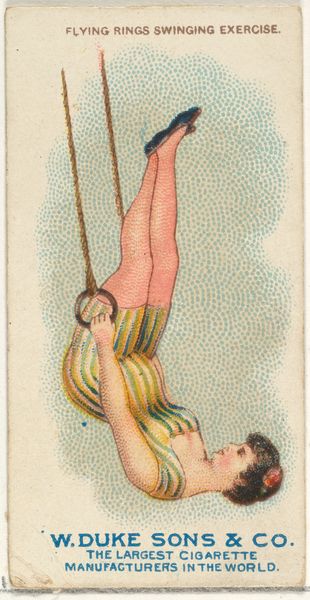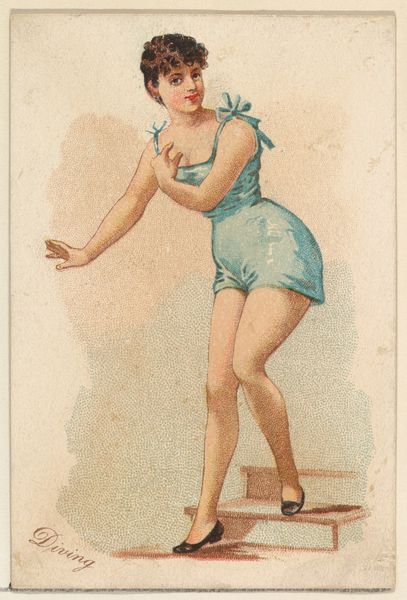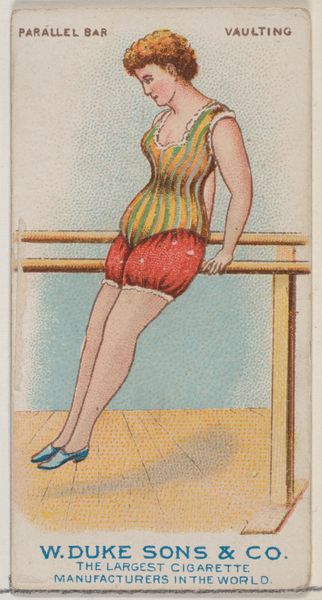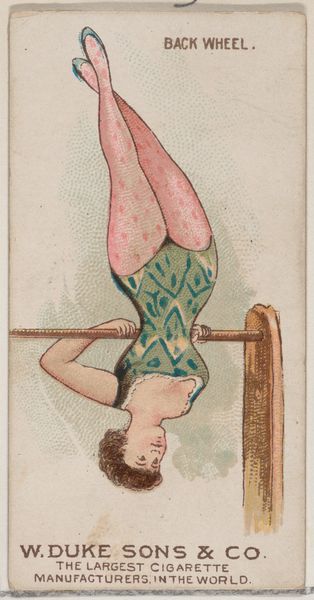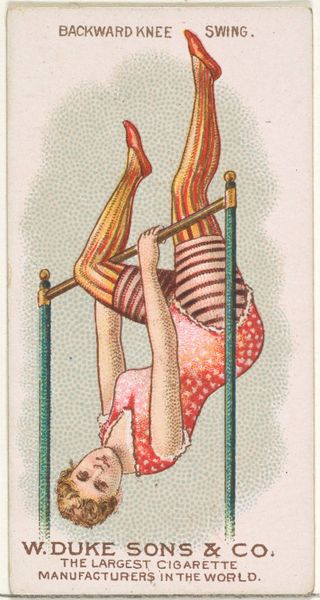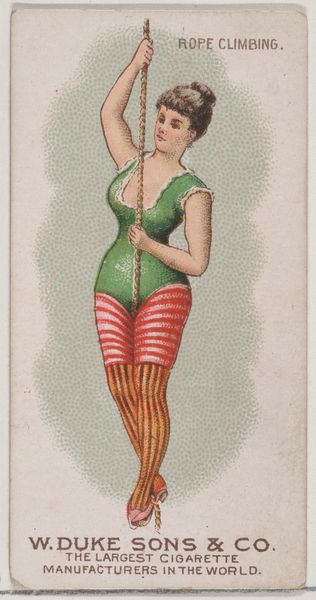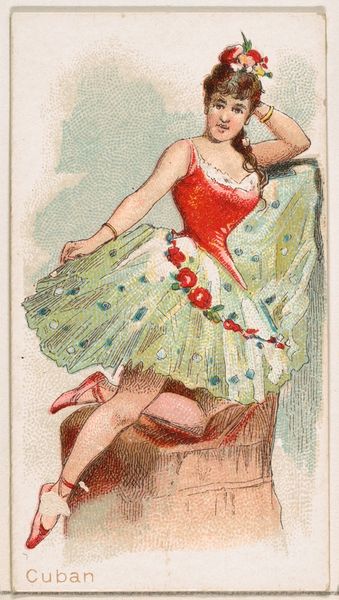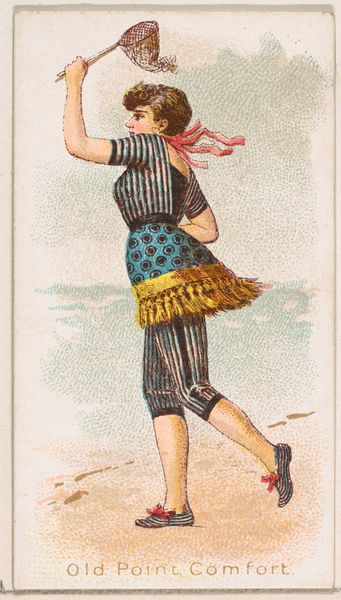
Flying Trapeze Leg Fly, from the Gymnastic Exercises series (N77) for Duke brand cigarettes 1887
0:00
0:00
drawing, coloured-pencil, print
#
drawing
#
coloured-pencil
# print
#
impressionism
#
caricature
#
caricature
#
figuration
#
coloured pencil
#
watercolour illustration
#
genre-painting
#
history-painting
Dimensions: Sheet: 2 3/4 x 1 1/2 in. (7 x 3.8 cm)
Copyright: Public Domain
Editor: So, this little chromolithograph, “Flying Trapeze, Leg Fly” from 1887 by W. Duke, Sons & Co., depicts a performer on a trapeze. I’m struck by how this almost looks like a miniature, slightly awkward Impressionist painting advertising cigarettes. What catches your eye? Curator: Well, the context is key here. These trade cards, like this one issued by a cigarette company, became immensely popular in the late 19th century. Consider this as visual marketing embedded within a larger culture of collecting. The democratization of images through printmaking allowed companies to circulate and normalize both their brand and specific representations of beauty and entertainment. How do you see the figure represented fitting into this aim of normalization and, really, promotion? Editor: I see what you mean. The figure, while perhaps slightly idealized, isn't overtly sexualized, right? More wholesome entertainment than… something scandalous. It’s aiming for broad appeal. So the cigarette company's aligning itself with that image. Curator: Precisely! These cards are part of a much larger network. The tobacco industry significantly shaped the public sphere through imagery, influencing taste and ideas around leisure and social status. In that way it becomes something of historical and social interest far beyond its status as ‘art.’ What would happen to the image's power without the brand at the bottom? Editor: I think it loses its… point, in a way? It becomes just an image, less connected to that historical moment and how companies influenced culture. I wouldn't immediately consider all of those components without that company logo. Curator: Exactly! Recognizing the political agency that an image of an advertisement like this embodies shows us how art is both shaped and shapes us. It also serves to highlight art’s broader significance, don’t you agree? Editor: Absolutely, thinking about it that way opens up so many other questions about the relationship between art and industry and power! Thank you.
Comments
No comments
Be the first to comment and join the conversation on the ultimate creative platform.
